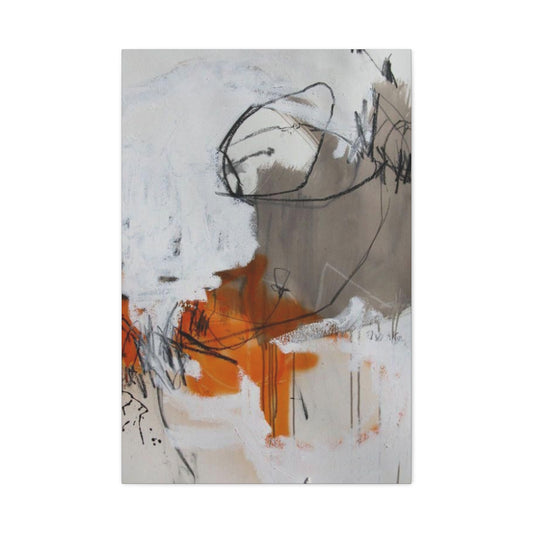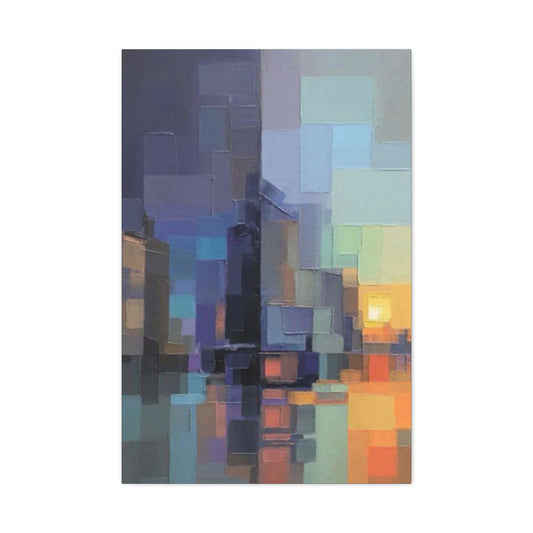The culmination of another extraordinary year presents an opportunity to commemorate achievements, reflect upon transformative experiences, and anticipate future possibilities within the sanctuary of your own dwelling. Contemporary circumstances have fundamentally altered traditional celebration approaches, necessitating innovative strategies that prioritize both festive enjoyment and comprehensive safety considerations.
Modern homeowners have discovered remarkable adaptability in transforming residential spaces into sophisticated entertainment venues that rival commercial establishments while maintaining intimate atmospheres conducive to meaningful connections. The evolution of domestic celebration has revealed the profound potential inherent within thoughtfully planned residential gatherings that emphasize quality over quantity, intimacy over extravagance, and mindful preparation over spontaneous chaos.
This comprehensive approach to year-end festivities acknowledges that memorable celebrations emerge from intentional planning, creative spatial utilization, and genuine consideration for guest comfort and well-being. By implementing strategic design principles, establishing appropriate safety protocols, and cultivating an atmosphere of warmth and hospitality, your residence can become the preferred destination for sophisticated seasonal celebrations.
The art of hosting successful residential gatherings requires understanding how different spaces within your home can be optimized for various aspects of entertainment, from initial guest reception through culminating midnight celebrations. Each area presents unique opportunities and challenges that, when properly addressed, contribute to an overall experience that exceeds expectations while maintaining appropriate safety standards.
Contemporary celebration planning must balance traditional festive elements with modern safety considerations, creating environments where guests feel simultaneously welcomed and protected. This delicate equilibrium requires thoughtful attention to spatial arrangements, ventilation considerations, and protocol implementation that enhances rather than detracts from the celebratory atmosphere.
Designing an Elegant Reception Area for Guest Arrivals
The reception area is one of the most crucial spaces in any home when it comes to making a lasting first impression. When guests arrive, the entrance sets the stage for the entire experience, creating expectations for what’s to come. Whether it’s a formal gathering, a holiday celebration, or an intimate evening, the way you design and prepare your reception area speaks volumes about the level of hospitality and attention to detail your guests can expect. Crafting an elegant and functional entrance requires more than just aesthetic choices—it’s about merging beauty with practicality to enhance your guests' arrival experience.
From creating a warm and welcoming atmosphere to ensuring guest convenience and safety, every element in the reception area should be strategically placed to serve both functional and decorative purposes. This article explores the many aspects of designing an elegant reception area, covering everything from the proper placement of essentials to integrating thoughtful design features that elevate the overall experience.
Creating a Welcoming Atmosphere
One of the primary objectives when designing a reception area is to make guests feel welcomed and comfortable as soon as they step inside. The entrance is the first place your guests interact with, and it should set the tone for the entire evening. Ambient lighting plays a key role in creating an inviting atmosphere that immediately puts your guests at ease. Consider warm, soft lighting to help create a cozy environment that encourages relaxation and conversation.
Incorporating elegant light fixtures, such as chandeliers, pendant lights, or strategically placed floor lamps, can elevate the mood and give the space a sense of grandeur. To add a festive touch, string lights or lanterns can be incorporated, creating a soft glow that adds to the celebratory ambiance. If possible, opt for lighting that’s adjustable, allowing you to change the mood of the room depending on the time of day and the vibe you wish to create.
Complementing the lighting with decorative elements like fresh flowers, elegant mirrors, or tasteful artwork can further enhance the space, giving your guests a glimpse of the design aesthetic that will unfold as they move further into your home. Beautiful floral arrangements placed at key spots, like near the entrance door or on a console table, not only add color and texture but also introduce a scent that can greet guests as soon as they enter.
Functional Considerations for Convenience and Safety
While the reception area needs to impress visually, it also needs to be functional, offering convenience for guests as they arrive. The entrance should be designed in a way that facilitates the easy flow of people, avoiding any crowding or congestion. This means paying attention to both the layout and the placement of key items.
A dedicated station near the entrance can provide useful amenities such as hand hygiene products. High-end sanitizers, displayed in elegant dispensers that match your decor, allow guests to clean their hands without compromising the overall aesthetic of the space. You can make the sanitizer look like a sophisticated accessory by selecting chic containers that fit the design theme. This simple yet thoughtful addition enhances both the practicality and the beauty of the space.
Face coverings have become a necessity at many events, and instead of presenting them as a mere functional object, you can integrate them into your design. Opt for attractive, reusable face masks in various colors and fabrics that reflect your theme. Present them in decorative containers, bowls, or trays that blend seamlessly with the rest of the entrance decor. This thoughtful approach makes guests feel more comfortable and less like they are dealing with a health mandate.
Interactive Design Elements for a Festive Touch
One way to immediately engage your guests is by incorporating interactive design elements that invite them to partake in the celebration. Fun, celebratory accessories placed near the entrance not only enhance the aesthetic but also encourage immediate participation. Consider providing festive headwear such as glittering tiaras, metallic party hats, or even quirky noise-makers for your guests to wear or use as soon as they arrive.
A decorative display of these accessories can be arranged on elegant trays, vintage bowls, or decorative baskets, adding to the charm of the space. Not only does this invite guests to join in on the fun, but it also creates opportunities for memorable photographs that capture the essence of the event from the very beginning. The playfulness of such elements can bring an element of light-heartedness and joy to the event while creating visual interest in the entrance area.
Additionally, integrating items like party favors or miniature bottles of champagne can make the entrance feel like a prelude to something special, building anticipation for the evening ahead. As guests receive these fun tokens, they feel immediately immersed in the celebration.
Organizing Outerwear and Personal Belongings
With many events taking place during colder months or in areas with fluctuating weather, it is important to ensure that guests have a convenient place to leave their outerwear. An elegant coat rack or a dedicated coat closet near the entrance serves both a functional and a decorative purpose. The organization of outerwear ensures that the space remains tidy and that guests don’t have to worry about where to store their belongings.
If you’re short on space, consider installing stylish wall-mounted hooks or a compact but elegant coat stand. These can be placed in a way that doesn’t obstruct movement while still providing an organized solution. If you have the space, a more elaborate coat closet can be added to maintain an organized and clutter-free entrance. Proper accommodation of guests’ coats and bags helps keep the reception area clutter-free, ensuring a smoother flow of traffic.
For a more sophisticated touch, choose coat hangers that match the decor—perhaps wooden or velvet-lined options that elevate the overall look of the space. If necessary, provide guests with a tray or basket where they can place their personal items, such as purses or small bags, ensuring everything has its place while remaining within easy reach.
Practical Yet Elegant Furniture for the Reception Area
Furniture in the reception area must not only look stylish but should also serve functional purposes that enhance guest convenience. A well-placed console table near the entrance provides a great surface for decorative elements like flowers, candles, and photo frames. It can also be used to hold event programs or small gift bags that guests might pick up as they arrive.
Consider adding comfortable seating options, such as upholstered benches or small chairs, to give guests a moment to relax as they enter. This also makes it easier for them to remove their shoes or make small adjustments before joining the larger gathering. These seating options don’t have to take up much space; rather, they should be strategically placed to avoid crowding the area.
In terms of material selection, opt for pieces that are not only elegant but durable enough to withstand high traffic. Furniture made from solid wood, metal, or even acrylic can be both functional and aesthetically pleasing, contributing to the overall look of the space without compromising on durability.
Creating a Cohesive Design Theme
An essential aspect of designing a memorable reception area is creating a cohesive design theme that resonates throughout the space. The design should reflect the overall tone of the event and be consistent with the rest of the home’s decor. Whether your gathering is formal, casual, or themed, the entrance area must tie in with the rest of the evening’s design elements.
For example, a winter-themed celebration could incorporate elements like faux snow, pinecones, and frosted glass accents, while a tropical-themed gathering might feature vibrant flowers, lush greenery, and warm, golden lighting. It’s also important to select materials and textures that complement the theme—think plush velvet cushions for a formal event or rattan baskets for a casual gathering.
Decorative elements should feel intentional and connected to the celebration. This includes the choice of colors, patterns, and accessories that tie back to the broader theme. The goal is to make your guests feel as though they are stepping into a well-curated, thoughtfully designed environment that sets the stage for a truly memorable evening.
Transforming Outdoor Spaces into Premium Entertainment Venues
Exterior areas present exceptional opportunities for creating memorable celebration environments that naturally address ventilation concerns while providing unique atmospheric qualities impossible to replicate indoors. The transformation of outdoor spaces requires careful consideration of weather protection, lighting solutions, and comfort elements that ensure guest satisfaction regardless of seasonal conditions.
Culinary preparation areas within outdoor settings create focal points for social interaction while distributing guest positioning naturally throughout the available space. A well-positioned grilling station serves both practical and social functions, providing entertainment through cooking processes while offering delicious refreshments that encourage mingling and conversation.
Strategic positioning of food preparation areas considers prevailing wind patterns, proximity to indoor kitchen facilities, and guest traffic flow to ensure optimal functionality. Elevated platforms or designated cooking zones help organize space while preventing crowding around heat sources and sharp implements.
Beverage service stations positioned strategically throughout outdoor areas provide convenient access while encouraging natural guest distribution. Mobile bar carts, permanent outdoor bar installations, or temporary serving stations can be positioned to create logical gathering points without causing bottlenecks or overcrowding in any single location.
Seating arrangements in outdoor celebration areas should accommodate various social preferences while maintaining appropriate spacing between different guest groups. Combination of intimate conversation areas with larger communal spaces provides options for different interaction styles throughout the evening.
Weather protection elements ensure celebration continuity regardless of atmospheric conditions. Retractable awnings, elegant tent structures, or permanent covered areas allow for outdoor celebration benefits while providing security against unexpected weather changes.
Illumination in outdoor celebration areas requires layered approaches that provide both functional visibility and atmospheric appeal. String lights create magical overhead canopies, lanterns provide portable accent lighting, and fire features offer both warmth and dramatic focal points that enhance the celebratory atmosphere.
Temperature control considerations become particularly important for extended outdoor celebrations. Heating elements such as fire pits, patio heaters, or portable warming stations ensure guest comfort throughout evening temperature variations, while cooling options such as misting systems or strategically placed fans address warm weather concerns.
Waste management systems positioned discretely throughout outdoor areas maintain cleanliness while encouraging responsible guest behavior. Attractive receptacles positioned conveniently but unobtrusively enable easy cleanup while preserving the aesthetic appeal of your outdoor celebration space.
Optimizing Dining Areas for Festive Gatherings
The dining experience represents a central component of year-end celebrations, requiring careful attention to both practical considerations and aesthetic appeal that enhances the overall festive atmosphere. Modern dining arrangements must balance traditional hospitality with contemporary safety awareness while maintaining elegance and comfort.
Table configuration plays a crucial role in establishing appropriate guest spacing while facilitating conversation and shared enjoyment. Extended table arrangements, whether achieved through additional furniture or creative repositioning of existing pieces, provide optimal solutions for maintaining safe distances while preserving the communal dining experience essential to memorable celebrations.
Seating selection should prioritize both comfort and mobility, allowing guests to participate fully in dining activities while maintaining flexibility for movement throughout the evening. Chairs that can be easily repositioned, comfortable for extended periods, and compatible with your overall aesthetic scheme contribute to successful dining experiences.
Tableware presentation offers opportunities to enhance the celebration theme while addressing practical safety considerations. Individual place settings reduce shared contact while elegant presentation maintains sophisticated appeal. Consider using higher-quality disposable options that provide safety benefits without compromising aesthetic standards.
Central serving arrangements require strategic planning to enable easy access while preventing crowding around food displays. Elevated serving pieces, extended buffet configurations, or multiple smaller serving stations distribute guest traffic while maintaining visual appeal and food safety standards.
Decorative elements within dining areas should complement rather than compete with food presentations while contributing to the overall festive atmosphere. Fresh floral arrangements, elegant candle displays, and seasonal decorative accents enhance visual appeal without interfering with practical dining functions.
Lighting in dining areas requires careful balance between romantic ambiance and practical visibility. Dimmed overhead lighting combined with candle illumination creates intimate atmosphere while ensuring guests can comfortably navigate food service and dining activities.
Ventilation considerations become particularly important in dining areas where guests spend extended periods in close proximity. Open windows, ceiling fans, or portable air circulation devices help maintain air quality while preserving comfort throughout extended dining experiences.
Service logistics should be planned to minimize contact while maintaining hospitality standards. Consider serving styles that reduce shared utensil use, pre-portioned offerings that eliminate serving confusion, and strategic placement of service items that facilitate smooth food distribution.
Creating Sophisticated Beverage Service Areas
Beverage service represents both a practical necessity and social focal point for successful year-end celebrations. Thoughtfully designed drink service areas provide convenient access while creating natural gathering spots that enhance social interaction throughout the evening.
Bar positioning within your celebration space should consider traffic flow patterns, proximity to seating areas, and integration with overall room design. Corner locations often provide optimal solutions, offering good visibility while preventing interference with major traffic pathways through your entertainment areas.
Equipment selection for home beverage service should balance functionality with spatial efficiency. Essential items such as ice buckets, cocktail shakers, appropriate glassware, and bottle openers should be readily accessible while maintaining organized appearance throughout the evening.
Beverage variety planning requires consideration of guest preferences, seasonal appropriateness, and service complexity. Offering signature cocktails alongside traditional options provides memorable elements while simplifying service logistics through focused preparation procedures.
Glassware selection impacts both safety and aesthetics within your beverage service area. High-quality plastic alternatives provide safety benefits while maintaining visual appeal, particularly important for outdoor service areas where breakage concerns are elevated.
Self-service elements within beverage areas reduce host responsibilities while empowering guests to customize their refreshment experiences. Clearly labeled options, attractive serving implements, and logical organization enable smooth self-service operations while maintaining sophisticated presentation standards.
Ice management systems ensure beverage quality while addressing sanitation concerns. Covered ice containers, appropriate serving implements, and regular replenishment procedures maintain both functionality and hygiene standards throughout extended celebration periods.
Garnish and accompaniment stations provide opportunities for guest customization while enhancing visual appeal of your beverage service area. Fresh fruits, herbs, and other cocktail garnishes displayed attractively enable personalization while contributing to overall aesthetic appeal.
Non-alcoholic alternatives should receive equal attention in presentation and variety, ensuring all guests feel included in beverage service offerings. Sparkling waters, specialty sodas, and creative mocktails provide sophisticated options while addressing various guest preferences and requirements.
Establishing Comfortable Balcony Entertainment Spaces
Balcony areas present unique opportunities for creating intimate celebration environments that maximize available space while providing desirable outdoor atmosphere benefits. These transitional spaces between interior and exterior offer distinctive advantages for hosting small gatherings with sophisticated appeal.
Furniture selection for balcony entertainment areas must consider space constraints while maximizing comfort and functionality. Multi-purpose pieces that provide both seating and storage, stackable options that enable flexible arrangements, and weather-resistant materials ensure practical solutions for these specialized spaces.
Privacy considerations become particularly important for balcony celebrations, especially in urban environments where neighboring properties are nearby. Strategic positioning of temporary screens, decorative panels, or plants can create intimate atmosphere while maintaining neighborly consideration.
Safety protocols for balcony celebrations require particular attention to weight limits, secure furniture positioning, and guest movement patterns. Ensure all furniture is properly secured, weight distribution is appropriate for structural limitations, and clear pathways prevent crowding near safety barriers.
Weather contingency planning becomes essential for balcony celebrations due to exposure to atmospheric conditions. Retractable covering options, portable heating or cooling solutions, and quick transition plans to interior spaces ensure celebration continuity regardless of weather changes.
Lighting solutions for balcony areas should provide both functional illumination and atmospheric appeal while considering power source limitations and weather resistance. Battery-operated options, solar-powered alternatives, and weatherproof electrical installations offer various solutions for different balcony configurations.
Service logistics for balcony celebrations require efficient systems for food and beverage transport from interior preparation areas. Rolling carts, portable serving stations, and strategic positioning of service items minimize host workload while maintaining service quality standards.
Acoustic considerations for balcony celebrations include both sound projection to neighboring properties and background noise management from surrounding environment. Appropriate music volume levels and strategic positioning of sound sources maintain festive atmosphere while preserving neighborhood harmony.
Decorative elements for balcony celebrations should withstand potential weather exposure while contributing to festive atmosphere. Secure mounting systems, weather-resistant materials, and strategic placement prevent damage while maintaining visual appeal throughout the celebration period.
Implementing Comprehensive Safety Protocols
Contemporary celebration planning requires integration of health and safety considerations that protect guest well-being while preserving festive atmosphere. Successful implementation of safety protocols requires advance planning, clear communication, and seamless integration with celebration logistics.
Ventilation management throughout indoor celebration areas ensures air quality maintenance while addressing comfort requirements. Opening windows, operating ceiling fans, and utilizing air purification systems contribute to healthier indoor environments while maintaining temperature control for guest comfort.
Guest capacity planning must consider both spatial limitations and safety requirements to ensure comfortable celebration environments. Predetermined maximum numbers, flexible space utilization, and contingency plans for unexpected attendance changes help maintain appropriate density levels throughout your event.
Communication strategies with invited guests should clearly convey safety expectations while maintaining welcoming tone. Advance notification of protocols, provision of necessary safety materials, and establishment of clear guidelines enable successful celebration experiences for all participants.
Sanitation station positioning throughout celebration areas provides convenient access while encouraging consistent hygiene practices. Multiple locations, attractive presentation, and regular maintenance ensure these essential elements remain functional and appealing throughout the evening.
Contact tracing preparation, while hopefully unnecessary, demonstrates responsible hosting practices. Guest lists, seating arrangements, and activity participation records provide necessary information should health authorities require such documentation following your celebration.
Emergency preparedness planning addresses potential health concerns that might arise during celebration activities. Access to first aid supplies, knowledge of local medical facilities, and clear emergency contact procedures ensure appropriate response capabilities should unexpected situations develop.
Food safety protocols protect guest health while maintaining service quality throughout celebration periods. Temperature control systems, appropriate serving methods, and timely replacement of perishable items prevent foodborne illness while preserving dining experience quality.
Cleaning and disinfection procedures implemented throughout celebration activities maintain sanitary conditions while addressing high-touch surfaces that multiple guests may encounter. Regular attention to door handles, serving utensils, and shared surfaces demonstrates commitment to guest protection.
Designing Atmospheric Lighting Schemes
Illumination design plays fundamental roles in establishing mood, ensuring safety, and creating memorable visual experiences throughout year-end celebrations. Professional-quality lighting schemes enhance every aspect of your event while addressing practical requirements for safe guest navigation and activity participation.
Layered lighting approaches provide flexibility for different celebration phases while maintaining consistent atmospheric quality. Ambient lighting establishes overall visibility, task lighting addresses specific activity requirements, and accent lighting creates dramatic focal points that enhance celebratory atmosphere throughout the evening.
Color temperature selection impacts both mood creation and practical functionality within celebration environments. Warmer lighting tones create intimate, welcoming atmospheres while cooler temperatures provide better visibility for food service and guest navigation activities.
Dynamic lighting capabilities enable atmosphere adjustment throughout different celebration phases. Dimmer controls, multiple switching zones, and programmable systems provide hosts with tools for creating optimal lighting conditions as celebration activities evolve throughout the evening.
Candle integration within lighting schemes creates romantic ambiance while requiring careful safety consideration. Flameless alternatives provide similar visual appeal with reduced fire risks, while traditional candles require secure positioning and constant monitoring throughout celebration periods.
Exterior lighting solutions address both safety requirements and aesthetic desires for outdoor celebration areas. Pathway illumination ensures safe guest movement, while accent lighting highlights landscaping features and architectural elements that enhance outdoor celebration appeal.
Backup lighting systems prevent celebration disruption should primary electrical systems experience failures. Battery-operated alternatives, generator systems, and portable lighting options ensure celebration continuity regardless of unexpected power issues.
Special effects lighting elements create memorable visual experiences that distinguish your celebration from ordinary gatherings. Projection systems, color-changing LED installations, and synchronized lighting displays add technological sophistication while maintaining elegant appeal.
Energy efficiency considerations help manage electrical consumption while maintaining lighting quality throughout extended celebration periods. LED alternatives, timer systems, and strategic switching practices reduce energy usage while preserving illumination standards essential for successful celebrations.
Curating Musical Entertainment and Audio Systems
Audio entertainment significantly influences celebration atmosphere while requiring careful consideration of volume levels, content selection, and technical requirements that ensure optimal guest experience without creating neighborhood disturbances or overwhelming conversation opportunities.
Sound system selection must balance audio quality with spatial requirements and technical complexity. Wireless systems provide flexibility for speaker positioning while reducing installation complications, though wired alternatives may offer superior audio quality for discerning hosts who prioritize sound fidelity.
Music curation should reflect diverse guest preferences while maintaining consistent energy levels appropriate for different celebration phases. Beginning with mellower background selections during dining periods, gradually transitioning to more energetic options as evening activities intensify, and culminating with celebratory music for midnight countdown activities.
Volume management requires ongoing attention throughout celebration periods to maintain optimal balance between audible entertainment and comfortable conversation levels. Regular monitoring, guest feedback awareness, and flexible adjustment capabilities ensure audio enhancement rather than audio interference with social interaction.
Playlist organization should anticipate celebration flow while providing flexibility for spontaneous adjustments based on guest response and celebration dynamics. Pre-programmed selections reduce host responsibilities while backup options enable quick adaptation to changing celebration requirements.
Acoustic considerations for different spaces within your home require tailored approaches to speaker positioning and volume control. Hard surfaces reflect sound differently than carpeted areas, outdoor spaces dissipate sound more rapidly than enclosed rooms, and ceiling heights impact sound distribution patterns throughout your celebration areas.
Technical backup systems prevent entertainment disruption should primary audio equipment experience malfunctions. Secondary devices, alternative music sources, and simplified backup procedures ensure continuation of musical entertainment regardless of technical difficulties that might develop during celebration activities.
Interactive audio elements enable guest participation in entertainment selection while maintaining host control over overall celebration atmosphere. Controlled playlist requests, designated music sharing periods, and collaborative entertainment planning create engagement opportunities while preserving celebration coherence.
Implementing Elegant Waste Management Solutions
Effective waste management systems maintain cleanliness and organization throughout celebration periods while remaining discretely integrated with overall aesthetic schemes. Professional-quality waste handling prevents accumulation of debris while preserving the sophisticated atmosphere essential for memorable celebrations.
Receptacle positioning throughout celebration areas provides convenient disposal access while minimizing visual impact on decorative schemes. Multiple smaller containers distributed strategically often prove more effective than fewer larger options that might become overwhelmed or create crowding around disposal locations.
Waste sorting systems enable environmental responsibility while addressing different disposal requirements for various celebration materials. Separate containers for recyclables, compostable materials, and general waste demonstrate environmental consciousness while simplifying post-celebration cleanup procedures.
Liner systems for waste containers facilitate easy disposal while preventing leakage or odor issues that might develop during extended celebration periods. High-quality liner materials, secure attachment systems, and regular replacement procedures maintain sanitary conditions throughout your event.
Disposal logistics for different waste types require advance planning to ensure appropriate handling of celebration debris. Arrangements for extra pickup services, knowledge of local disposal requirements, and preparation of materials for municipal collection prevent post-celebration disposal complications.
Guest education regarding waste management systems encourages participation while maintaining celebration atmosphere. Clear labeling, strategic positioning, and subtle guidance help guests utilize disposal systems effectively while preserving focus on celebration enjoyment rather than cleanup responsibilities.
Cleanup supply positioning enables quick response to spills or accidents while maintaining guest comfort throughout celebration periods. Strategically located cleaning materials, absorption supplies, and stain removal products provide hosts with tools for immediate response to unexpected cleanup requirements.
Odor management systems prevent waste-related unpleasant smells from impacting celebration atmosphere. Covered containers, odor-absorbing materials, and regular maintenance procedures ensure waste management systems remain functionally effective without creating sensory distractions.
Creating Memorable Decorative Themes
Thematic decoration development transforms ordinary residential spaces into extraordinary celebration environments that create lasting memories while reflecting personal style preferences and seasonal celebration traditions. Cohesive decorative schemes enhance every aspect of celebration experience while providing attractive backdrops for photographs and social media documentation.
Color palette selection establishes foundation for all decorative decisions while influencing mood creation and visual coherence throughout celebration spaces. Metallic accents provide elegance and sophistication, while coordinating color schemes create harmony between different areas of your celebration environment.
Material selection for decorative elements should consider durability requirements, safety implications, and aesthetic impact throughout extended celebration periods. High-quality materials maintain appearance despite guest interaction, while strategic placement prevents damage from normal celebration activities.
Scale considerations ensure decorative elements remain proportionate to available spaces while creating appropriate visual impact. Oversized elements in small spaces overwhelm rather than enhance, while undersized decorations disappear within larger areas, failing to create desired atmospheric improvements.
Lighting integration with decorative elements creates dramatic visual effects that enhance celebratory atmosphere while addressing practical illumination requirements. Illuminated decorations serve dual purposes by contributing both aesthetic appeal and functional lighting throughout celebration areas.
Interactive decorative elements encourage guest participation while creating memorable experiences that distinguish your celebration from standard gatherings. Photo opportunity areas, guest participation displays, and collaborative decorative projects engage guests while creating lasting celebration memories.
Seasonal appropriateness ensures decorative schemes reflect traditional celebration expectations while allowing personal creativity expression. Classic elements combined with innovative interpretations create familiar comfort while providing unique memorable experiences for celebration participants.
Maintenance considerations for decorative installations ensure continued appeal throughout extended celebration periods. Secure mounting systems, damage-resistant materials, and quick repair procedures maintain decorative quality while preventing safety hazards that might develop during celebration activities.
Orchestrating Seamless Celebration Timeline Management
Successful celebration execution requires detailed timeline planning that coordinates all celebration elements while maintaining flexibility for spontaneous moments and unexpected developments. Professional-quality event management ensures smooth celebration flow while reducing host stress and maximizing guest enjoyment throughout the evening.
Pre-celebration preparation schedules should account for decoration installation, food preparation, safety protocol implementation, and personal preparation requirements. Detailed timeline planning prevents last-minute rushing while ensuring all celebration elements receive appropriate attention before guest arrivals.
Guest arrival management requires systems for welcoming procedures, safety protocol implementation, and initial beverage service that create positive first impressions while establishing celebration tone. Smooth arrival processes prevent crowding while ensuring each guest receives appropriate attention and orientation.
Activity transition planning ensures celebration maintains appropriate energy levels while providing variety throughout extended evening periods. Planned transitions between dining, socializing, entertainment, and countdown activities prevent celebration stagnation while maintaining guest engagement.
Food service timing requires coordination between preparation completion, guest readiness, and optimal serving temperatures. Strategic timing ensures peak food quality while accommodating guest preferences and celebration flow requirements throughout designated dining periods.
Entertainment scheduling should balance structured activities with spontaneous social interaction opportunities. Planned entertainment elements provide celebration highlights while preserving flexibility for organic social development that often creates most memorable celebration moments.
Countdown coordination for midnight celebration requires advance preparation to ensure climactic celebration moment receives appropriate attention and coordination. Synchronized timepieces, champagne preparation, and guest positioning create memorable conclusion to evening celebration activities.
Post-celebration logistics planning addresses guest departure procedures, cleanup organization, and follow-up activities that conclude celebration responsibilities. Efficient systems for guest departure assistance, debris management, and facility restoration enable quick transition back to normal residential function.
Emergency timeline adjustments provide flexibility for unexpected developments while maintaining celebration quality. Weather contingencies, guest changes, and technical difficulties require rapid response capabilities that preserve celebration enjoyment despite unforeseen challenges.
The comprehensive approach to residential year-end celebration planning acknowledges that memorable experiences emerge from careful attention to every detail combined with genuine hospitality and consideration for guest comfort and safety. By implementing these professional-quality strategies within your residential environment, you create celebration experiences that exceed guest expectations while establishing your home as the preferred destination for sophisticated seasonal gatherings.
This investment in celebration planning expertise pays dividends through enhanced social connections, improved entertaining confidence, and the satisfaction of successfully hosting events that create lasting positive memories for friends and family members. The skills developed through implementing these comprehensive celebration strategies transfer to other entertaining opportunities throughout the year, establishing foundation for enhanced social hosting capabilities that benefit both hosts and guests.
Modern residential celebration represents evolution of traditional hospitality practices adapted for contemporary circumstances while preserving essential elements that make gatherings memorable and meaningful. Your commitment to excellence in celebration planning demonstrates respect for guests while creating experiences that strengthen relationships and build lasting memories that extend far beyond single evening celebrations.




























